The regional towns where holiday home listings have jumped, but rentals are scarce
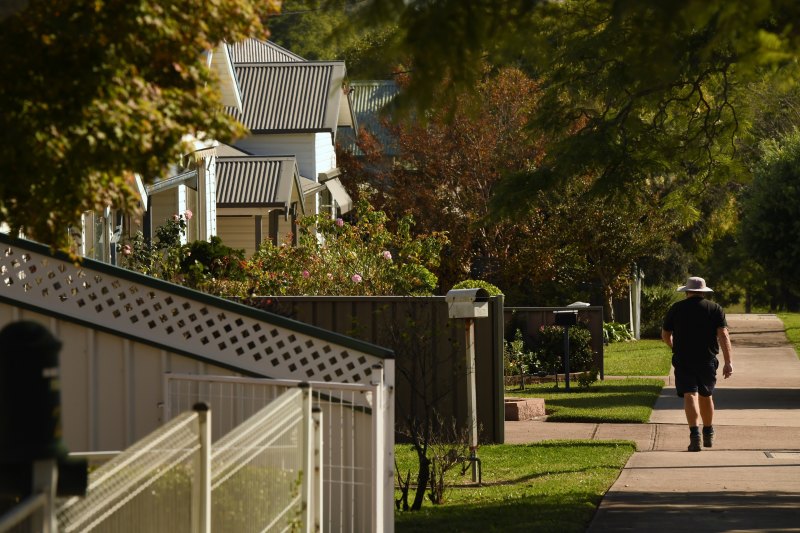
The number of properties listed on Airbnb has skyrocketed above pre-pandemic levels in dozens of regional council areas, new figures reveal, exacerbating the rental crisis.
Homes that could be used as long-term rental properties to house essential workers now exist for holiday accommodation, raising concerns ahead of this week’s jobs and skills summit that some regional towns will not be able to attract and keep staff in caring professions or hospitality.
Even in towns where Airbnb listings have not rebounded to normal levels there are more short-stay lets on offer than long-term rental properties, triggering concern that if short-stay listings normalise the consequences will be grim for would-be tenants.
Both supply and demand for rental properties have been hit by the pandemic. Tree-changers who could work remotely moved out of capital cities and secured rentals in regional towns or bought properties from landlords to convert to owner-occupied housing.
In NSW, Muswellbrook Shire, a popular wine region, topped the list as Airbnb properties rose 191 per cent between July 2019 to July 2022, figures from AirDNA reveal.
The raw numbers are small – an increase from 11 three years ago to 32 last month – but even a change of this size can be keenly felt in a regional town, where only 46 long-term rentals were advertised last month, separate figures from SQM show.
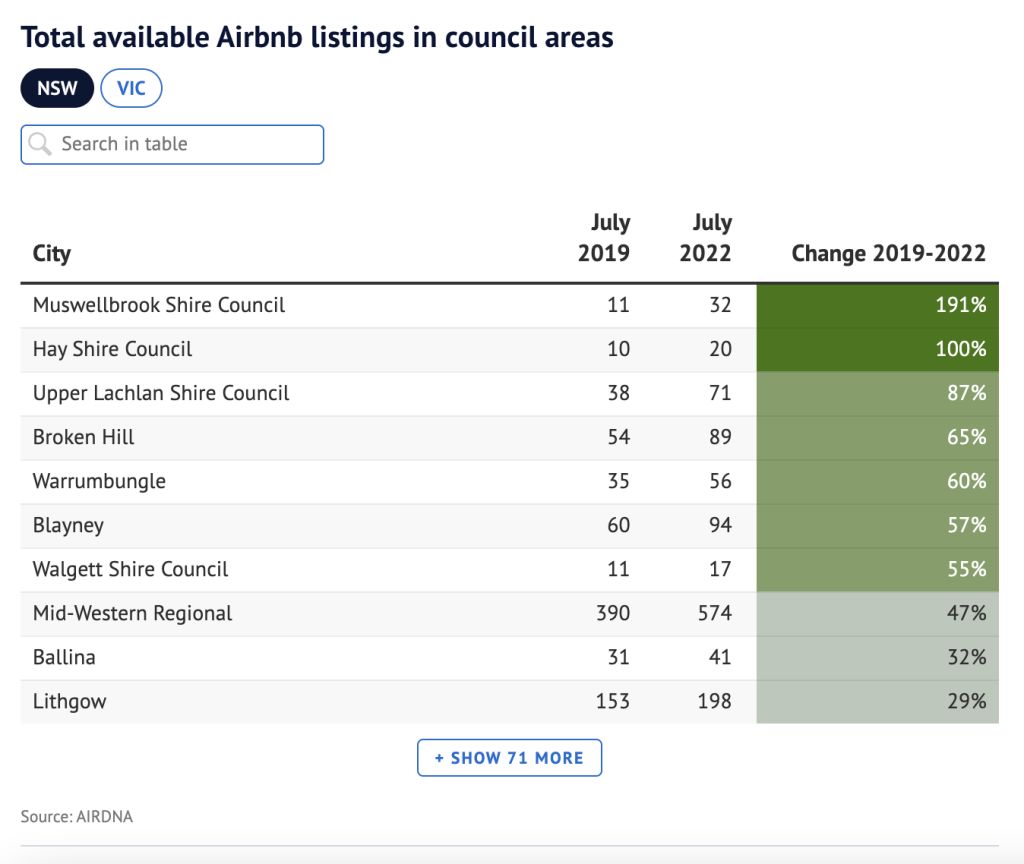
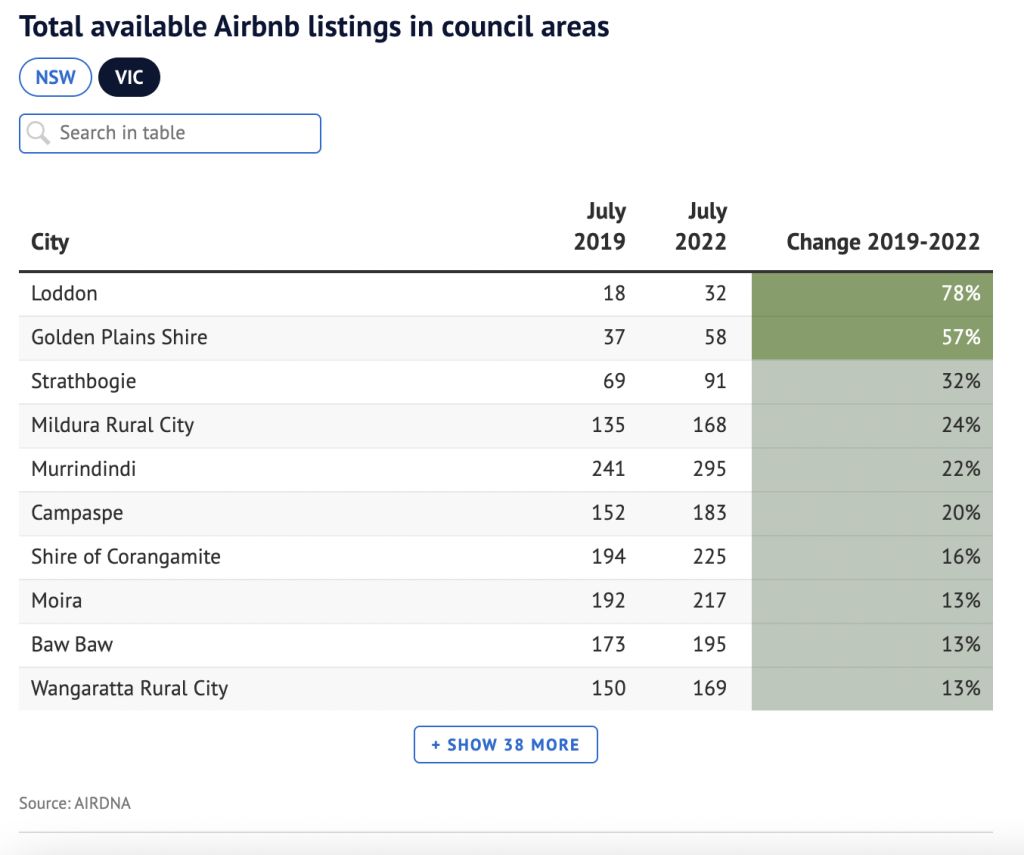
It was followed by Hay Shire, where available Airbnb listings doubled from 10 to 20. Only three long-term rentals were advertised.
In Victoria, Airbnb properties rose most in the Loddon Shire, north-west of Bendigo, increasing 78 per cent in the same period, from 18 to 32. There were 33 long-term rentals advertised.
In Golden Plains Shire, short stays grew 57 per cent, from 37 to 58, compared with 46 long-term rentals.
AirDNA included council areas with at least 10 available listings; that is, any property with at least one day booked or available during the month.
Of the 127 regional councils counted in the data across two states, 61 recorded a rise in the number of Airbnb listings and the remaining 66 fell or held steady.
Measuring the effect of short-stay lets is a challenge because not every Airbnb listing can be converted to long-term rental.
Some are listed by owner-occupiers who let out their home for a couple of weeks while on holiday. Others are holiday homes used by city residents for a vacation and let out to tourists at other times, prompting some councils to ask owners to rent their secondary properties to locals instead. Some parts of NSW have a 180-day cap on short-term lets of empty homes.
Regional Australia Institute chief economist Dr Kim Houghton said short-term letting changes would acutely affect small and undersupplied regional rental markets that were sensitive to shifts in the number of rentals on offer.
“Partly it’s about scale,” Houghton said. “There has been an undersupply in building approvals in the last five to 10 years.
“We were coming off a period of general underinvestment; that’s partly why the rental market tightened so fast – there wasn’t huge supply to begin with.”
He said even in regional council areas where Airbnb listings have fallen, it was not enough to offset the unprecedented demand from city slickers.
Airbnb properties in the Byron Shire fell 26 per cent, from 3355 in July 2019 to 2488 in 2022. That outnumbered the 136 long-term rentals advertised.
Houghton said converting long-term rentals into short-term leases would exacerbate an already tight rental market, leaving many towns unable to attract essential workers in industries such as hospitality and aged care because they could not house them.
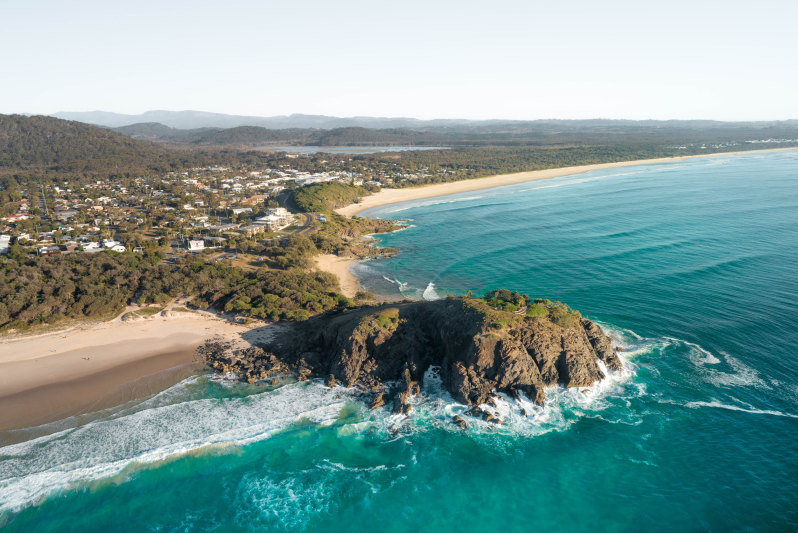
University of Sydney professor of urban and regional planning Nicole Gurran said the number of Airbnb properties boomed in regional areas after Australians were restricted from holidaying overseas in the earlier stage of the pandemic.
“When you think of places like Muswellbrook, even though that may not have been ground zero for tourism … well-presented, short-term rental stock all of a sudden becomes an attractive investment at the same time we saw an increase in domestic tourist demand in these regional areas,” she said.
Gurran said it was a perfect storm for a rental crisis in tight markets, with several factors driving huge demand in the face of an acute shortage.
Tenants’ Union of NSW chief executive Leo Patterson Ross said state governments had not done enough to monitor and regulate the industry, adding that the NSW registry of short-term lets is not public and therefore opaque.
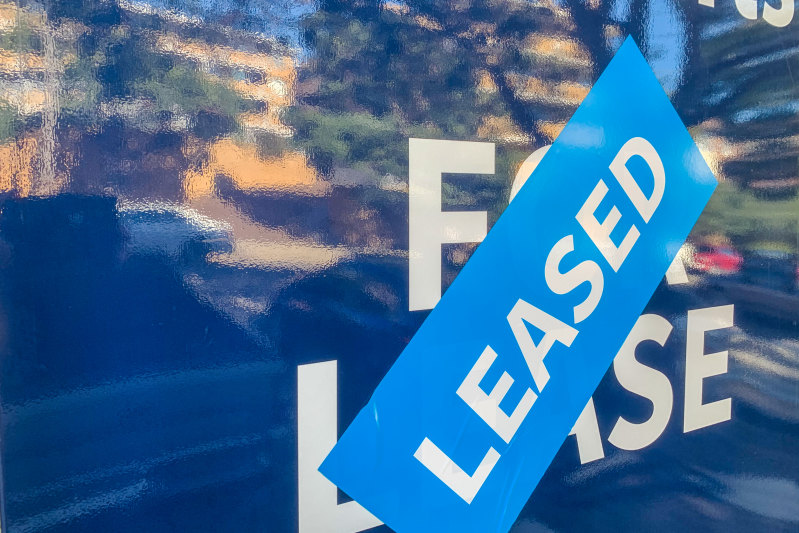
“A big problem is that we don’t have properly reliable data around housing to start with. These properties could be listed by the occupier of the home being available for one day in a month. But we just don’t know,” he said.
“What’s really clear is we do have an extreme shortage of particularly affordable homes. Especially in regional areas where often tourism and holiday lettings are growing in use or have had an impact for many years.”
He said many regional towns are yet to see the number of Airbnb properties return to pre-pandemic levels, and the rental crisis could turn into growing homelessness.
Airbnb country manager for Australia and New Zealand Susan Wheeldon said neither Airbnb nor its host community is opposed to regulation, and they support the NSW and Tasmanian frameworks, including their registration components.
“The regulatory framework in New South Wales provides the state government with a very clear understanding of the number of short-term rental accommodation properties across the state, where they are located, and how frequently they are used throughout the year,” Wheeldon said.
“While short-term rentals generally comprise a tiny proportion of the overall property market, we’re keen to keep finding ways that we can make a positive contribution to this important issue.”
The company said these Airbnb listings may be the owner’s primary residence, which they list on Airbnb while travelling to offset the cost of their holiday, and are not necessarily homes that will be transferred to the long-term rental market.
We recommend
We thought you might like
States
Capital Cities
Capital Cities - Rentals
Popular Areas
Allhomes
More
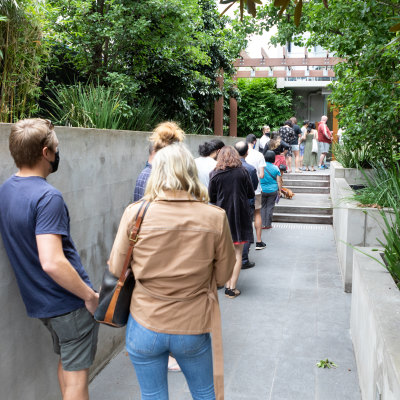

/http%3A%2F%2Fprod.static9.net.au%2Ffs%2F7165c319-f43f-42fc-9e8b-c2c9670f5e4c)







